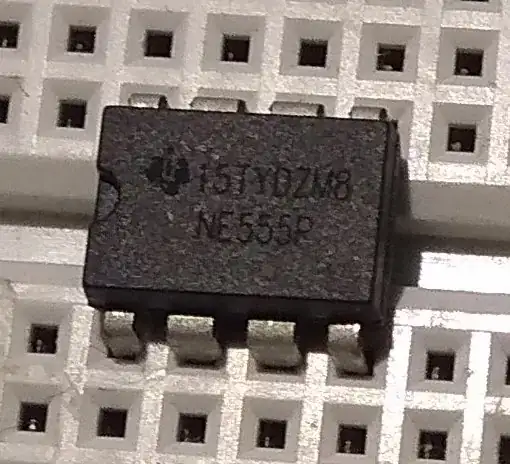Your design is flakey.
You are using the conductance of water to trip the reset line and this is not a great idea given that the reset pin current (the leakage current from the reset pin) is in the realm of 0.1 mA to 1.5 mA depending on the voltage state of that pin. Read the DS.
So, if it is producing 0.1 mA (ignoring the water sensor effect), this passes through a 10 k resistor to ground and produces a voltage of 1 volt. If the current is twice as high it will produce 2 volts etc..
Given that \$V_{RESET}\$ (i.e. the voltage at which a reset occurs) is typically 0.7 volts, you are in trouble with this design and you need to lower the 10k resistor.

The water sensor can only add voltage to the reset pin so this doesn't help.
Maybe one device inherently produces a lower reset pin leakage current and this happens to work on the NE555N device you have tested. As far as I can tell, you have a bad design and it may work with one chip but it certainly can't be expected to work with different supplier's chips.
Try a redesign and don't think that it must be a good design if it works on chip A.




triggerandthresholdinputs ... those input voltages are compared to the voltage levels on the internal voltage divider – jsotola Feb 21 '18 at 19:08